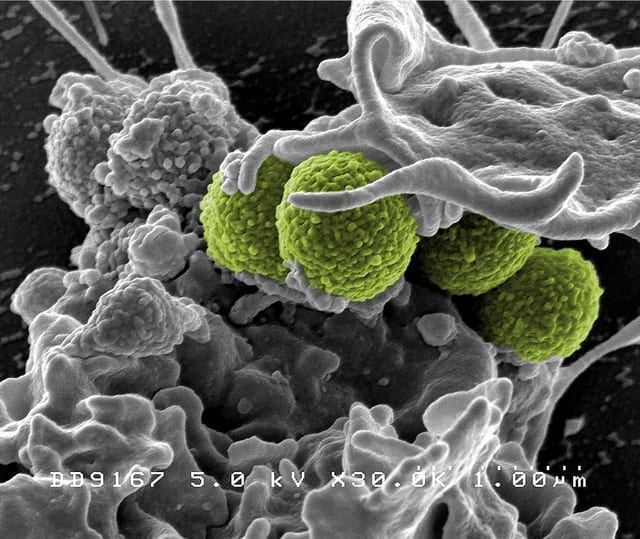In the fight against “superbugs,” scientists have discovered a class of agents that can make some of the most notorious strains vulnerable to the same antibiotics that they once handily shrugged off. The report on the promising agents called metallopolymers appears in the Journal of the American Chemical Society.
Antibiotic-resistant bacteria known as MRSA (methicillin-resistant Staphylococcus aureus) is responsible for a significant fraction of the infections that patients acquire in hospitals. One of the ways MRSA undermines conventional treatments is by producing enzymes that inactivate conventional β-lactam antibiotics, including penicillins, cephalosporins, and carbapenems, through various mechanisms, resulting in increased mortality rates and hospitalization costs.
Scientists have been developing new agents to combat these enzymes, but the agents so far have fallen short. Chuanbing Tang and colleagues from the University of South Carolina wanted to find a better alternative.
They tested a recently discovered class of metallopolymers — large, metal-containing molecules — against several strains of MRSA. When paired with the same antibiotics MRSA normally dispatches with ease, the polymer/antibiotic combo evaded the bacteria’s defensive enzymes and destroyed its protective walls, causing the bacteria to burst. Also, the metallopolymers mostly left red blood cells alone, which suggests they might have minimal side effects.
“These discoveries could pave a new platform to design antibiotics and antimicrobial agents to battle multidrug-resistant bacteria and superbugs,” the researchers state.
Read more at the Journal of the American Chemical Society: Antimicrobial Metallopolymers and Their Bioconjugates with Conventional Antibiotics against Multidrug-Resistant Bacteria.



